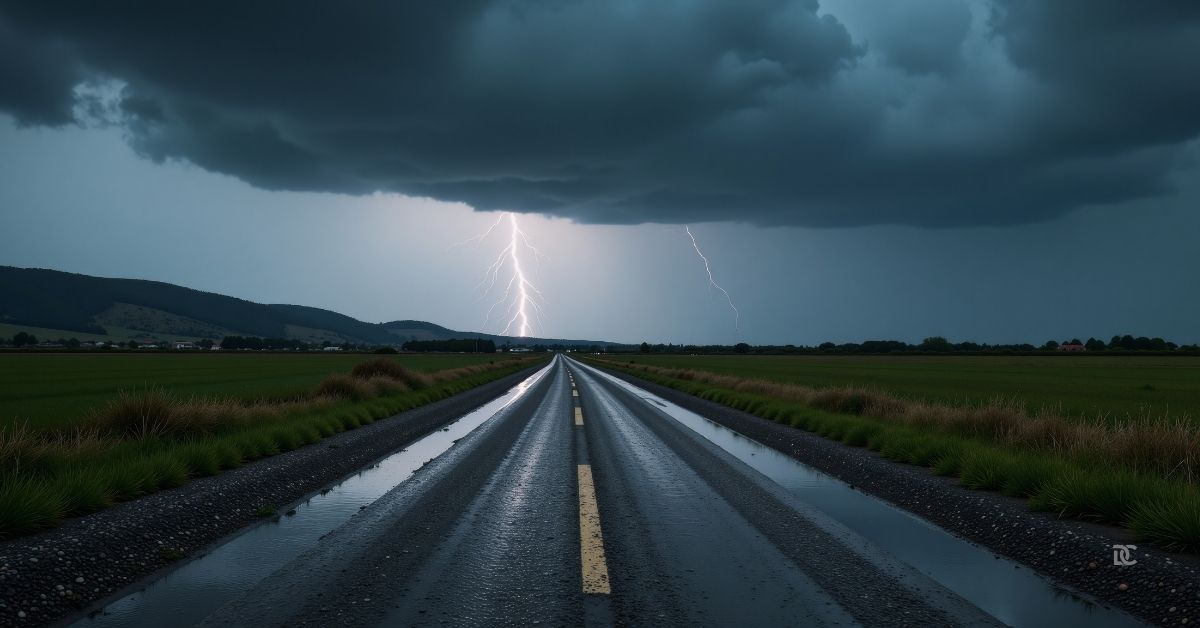Thanksgiving is almost here! Families nationwide are packing their cars, booking flights, and planning trips to reunite with loved ones. Nearly 80 million Americans are expected to travel for Thanksgiving this year, about 2 million more than last year. Most of them, around 90%, will hit the roads by car, thanks to lower gas prices. The rest will fly or take Amtrak trains.
However, significant storms on the horizon could disrupt Thanksgiving travel plans.
Record-Breaking Travel Numbers This Holiday Season
This Thanksgiving could see some of the busiest travel days ever. The Transportation Security Administration (TSA) expects the busiest Thanksgiving travel period on record. From Tuesday through December 2, they estimate that 18.3 million people will go through TSA checkpoints. That’s a 6% increase from last year!
Passenger volumes have been climbing steadily. In 2024, the TSA reported a 17% increase in travelers since 2022. The ten busiest travel days in TSA history have all occurred this year, and they expect this trend to continue. If you’re flying, be ready for long lines and extra security checks.
Also Read
Thanksgiving Travel Forecast
This week could bring some rough weather across the United States. The National Weather Service (NWS) predicts “messy Thanksgiving travel” with a mix of rain and snow in many areas. Whether driving, flying, or taking the train, here’s what you need to know to stay safe and reach your destination.
Eastern US: Rain and Snow
The East Coast is gearing up for some challenging weather. On Thursday, a low-pressure system will bring rain to the eastern seaboard. If traveling through states like Maine and New Hampshire, be prepared for snow in higher areas. Temperatures will drop, making roads slippery and driving conditions tough.
By the weekend, the Midwest and Great Lakes region could see heavy lake-effect snow. If you’re heading towards Michigan’s Upper Peninsula, expect several inches of snow on Monday. Showers will also hit the Upper Midwest and Lower Great Lakes, adding to the travel headaches.
Pacific Northwest: Still Recovering
The Pacific Northwest isn’t getting much of a break. Last week, a powerful storm hit the region, causing mass flooding and power outages. Communities are still recovering, and this week’s forecast isn’t improving. A new low-pressure system will bring more rain to Washington, Oregon, and California’s coastal areas.
If you plan to drive through California’s Sierra Nevada mountains, watch for heavy snow and strong winds. Roads could become dangerous, especially above 5,500 feet. Central California also faces another atmospheric river event on Tuesday, meaning more rain and potential flooding after last week’s storm.
Western US: Snow and Wind Warnings

The western part of the country is under a winter storm warning until Wednesday. California’s Sierra Nevada mountain range will see heavy snow and wind gusts up to 50 mph (81 kph). Roads will likely be snow-covered, leading to travel delays and risky driving conditions. Higher elevations will see “very difficult travel,” so if you’re heading through the mountains, waiting until the storm passes might be best.
Thanksgiving Storm Targets the East
As Thanksgiving Day and Black Friday approach, another storm is brewing across the eastern United States. AccuWeather meteorologists predict two possible scenarios:
- Slow-Moving Storm: This could lead to longer-lasting impacts from the Tennessee and Ohio Valleys to the Northeast. Expect continuous rain and snow, making travel tricky for several days.
- Southward Shift: The storm might move farther south and off the Carolina coast. This would result in a less intense storm, with rounds of rain and even snow from the Tennessee Valley eastward to the East Coast.
Both scenarios mean that you must stay alert and flexible with your plans if you’re traveling through these areas.
Tips to Navigate Stormy Travel
With storms and record-breaking travel numbers, here are some friendly tips to help you get through the holiday safely:
Stay Informed
Check the weather forecast regularly. Apps like Weather Channel, AccuWeather, and local news stations can provide up-to-date information. Knowing what to expect can help you plan better and avoid the worst of the storms.
Plan Ahead
Leave early to give yourself plenty of time to reach your destination. Traffic can slow down significantly, especially if roads are icy or flooded. Ensure your vehicle is in good condition—check your tires, brakes, and fluids before you go.
Pack Smart
Bring essentials in case you get stuck. This includes blankets, water, non-perishable snacks, a flashlight, and a first aid kit. If you’re flying, keep a change of clothes and important documents in your carry-on bag.
Drive Safely
If you’re driving, adjust your speed to the road conditions. Keep a safe distance from other vehicles, and use your headlights to increase visibility. If the weather becomes too dangerous, don’t hesitate to pull over and wait until it’s safer to continue.
What to Do If You’re Caught in a Storm
Storms can be unpredictable, so knowing what to do is important if you’re caught in bad weather while traveling.
If You’re Driving
- Stay Calm: Don’t panic. Take deep breaths and stay focused.
- Find Shelter: If the weather is too severe, find a safe place to wait it out. Gas stations, rest stops, and hotels are good options.
- Stay in Your Car: If you can’t find shelter, stay in your car with your seatbelt on. Keep the engine running and the heater on to stay warm. Make sure your exhaust pipe is clear to avoid carbon monoxide buildup.
If You’re Flying
- Listen to Crew Instructions: Follow the advice of flight attendants and pilots.
- Stay Informed: Keep an eye on flight status updates through your airline’s app or website.
- Be Patient: Delays and cancellations are common during storms. Stay patient and flexible with your plans.

At the Airport
- Stay Indoors: Avoid going outside if possible. The weather can change quickly, making travel conditions more hazardous.
- Find a Comfortable Spot: Use airport lounges or designated waiting areas to stay safe while waiting for your flight.
The upcoming Thanksgiving holiday travel season might be challenging, with storms on the horizon. However, you can still safely reach your destination with careful planning and a positive attitude. Remember to stay informed, pack smart, and prioritize safety.
Thanksgiving is a time to be grateful and spend quality moments with family. Don’t let bad weather ruin your holiday spirit. Embrace the journey, stay prepared, and enjoy the festivities once you arrive.
Safe Thanksgiving travels, and may your holiday be filled with warmth, joy, and memorable moments!






